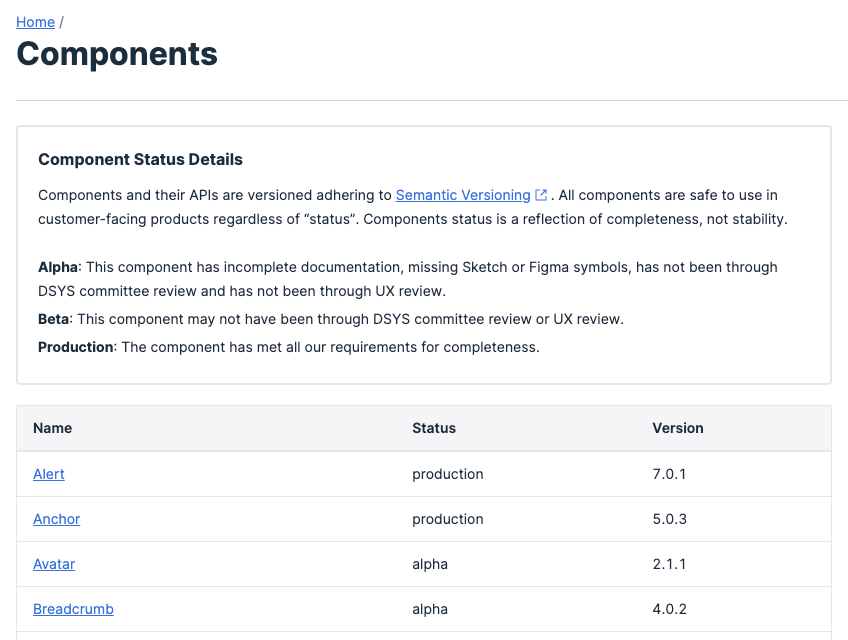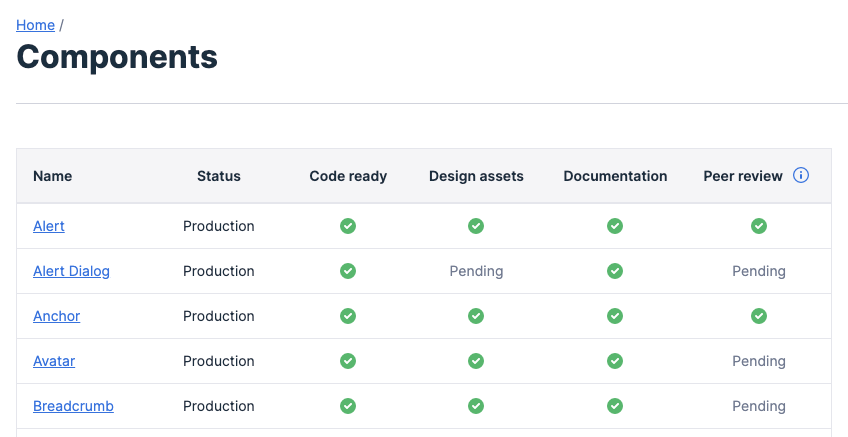Paste's Path to a Transparent Package Categorization System
When integrating a library into a project, you’ll likely want to ensure that it’s a mature and well-maintained library that won’t be deprecated a month down the line. If your project is a customer-facing platform and the library maintains your frontend components, all the more reason to have trust. Transparency between the library and the consumer is integral to building that trust.
When we first started releasing packages and documenting them on our website, we wanted to be upfront with our consumers about which components and patterns had design assets, complete docs, been through peer reviews, etc., in an effort to increase transparency. Each one of those steps is essential to creating a complete Paste package. We chose the terms alpha, beta and production to differentiate components that were standalone packages of code from ones that had been through more or all steps. Though we emphasized the fact that all of our components were stable, the terms alpha and beta still (understandably) caused some confusion.

While our intention behind choosing alpha, beta and production was to use language familiar to engineers and designers, our usage wasn’t consistent with the usage our consumers expected. Typically, in the tech world, alpha and beta refer to software that’s not yet stable. So, it made sense when we noticed a hesitancy toward using (fully mature) components and patterns that weren’t in production status.
We decided it was time for a change. We’re now no longer classifying any of our stable components as alpha or beta - they’re all production status. Ready for use! We are reserving alpha and beta for any experimental components we ship going forward, to indicate that the API could change drastically, and the component itself may even be removed from our library. Using any alpha or beta components will now be considered high-risk - not ready for use in production.
Rest assured, all of the components and patterns currently in the system are production status. No need to make any changes on your end - you can keep using all existing components with confidence.
After making the switch to align our definitions of alpha, beta and production to indicate level of risk, we needed a way to transparently communicate which steps each component/pattern had completed. Rather than creating a new categorization system, we decided to just, well, tell you. You can now find a checklist of all packages on the Components Overview and Patterns Overview pages, as well as individual package status checklists at the top of each page of documentation.

Here’s how we define each step:
- Code ready: the component or pattern package is published to NPM
- Design assets: the component or pattern asset is available in Figma
- Documentation: the component or pattern documentation is written and published on the Paste docs site
- Peer review: the component or pattern has been reviewed by both design and engineering committee members
As long as something is production status, it’s your best choice for a stable UI and a unified customer experience. Because the CX is our first priority and we rely on feedback from the customer (end product user) and the consumer (Paste implementor), our packages are actively maintained. We’re very intentional about how we design our APIs and ship updates. However, being an actively maintained library means that there may, every once in a while, be a breaking change released. When using a production status Paste component, you should feel confident in the stability of the API and the fact that the only time you’ll ever see a breaking change is when it’s absolutely necessary for the customer experience.
Our goal in making this shift was to increase transparency with our consumers in order to improve confidence in our system. It’s because of our mutual communication and the open feedback you share with us that this change was possible. Thanks!
Let us know what you think! If you have any questions or feedback for us, don’t hesitate to reach out (#help-design-system on Slack) or start a Discussion on Github.